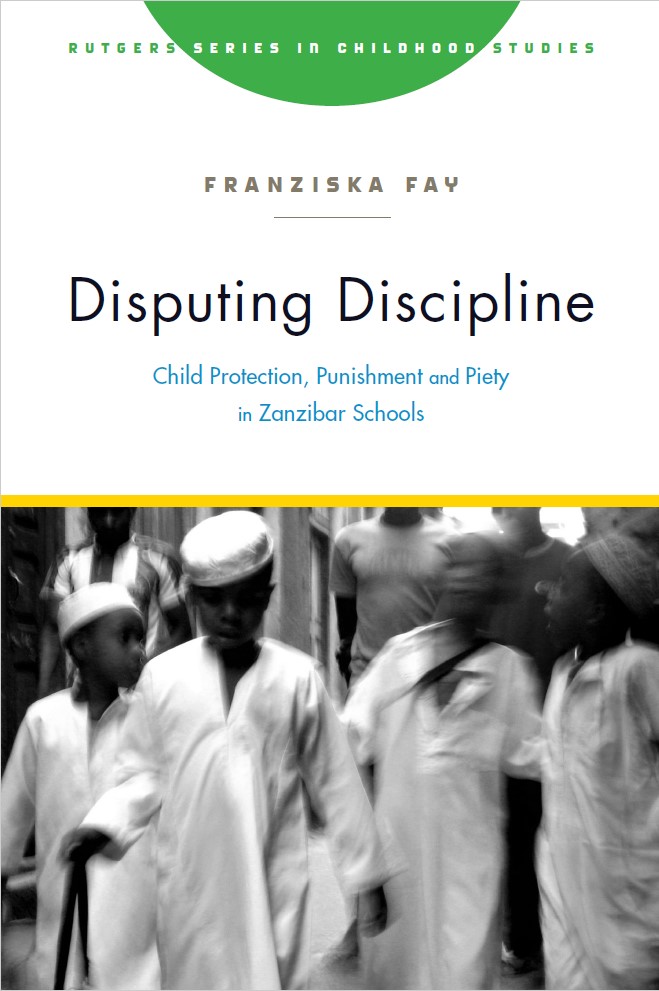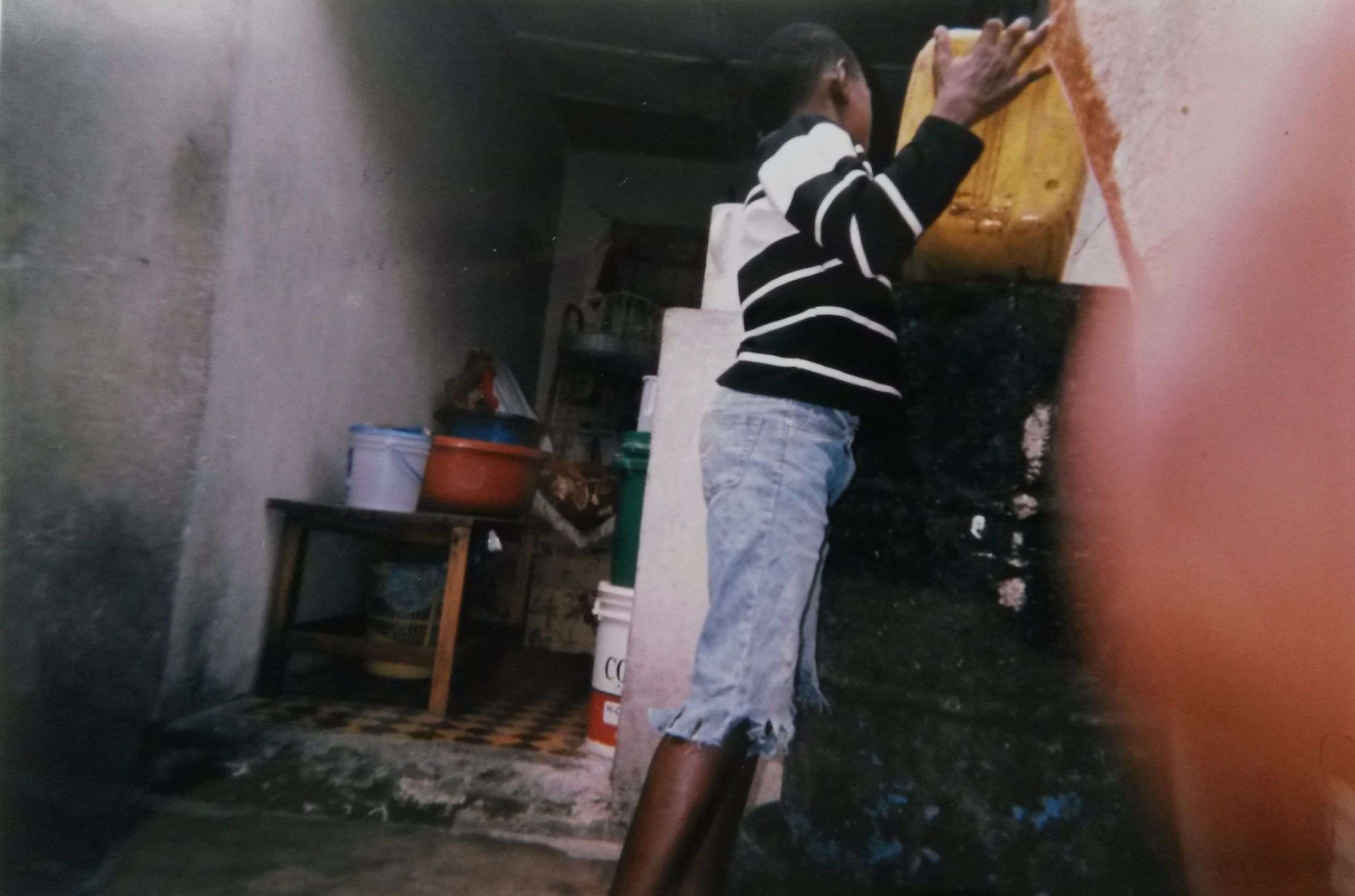Interview with Franziska Fay about her book Disputing Discipline: Child Protection, Punishment and Piety in Zanzibar Schools
Our member, Dr Franziska Fay (Johannes Gutenberg University Main, Germany), talks about her book, Disputing Discipline: Child Protection, Punishment and Piety in Zanzibar Schools (Rutgers University Press, 2021).

Q: What is this book about?
In Disputing Discipline I try to show how the dominant notion of an ethnographic object like “child protection” begins to change when we start comprehending it not from within, but from outside a politicised and policy-based sense of the term. In this regard, the book explores what it means to be young, safe, and pious at the same time and at the intersection of global development intervention in Zanzibar, Tanzania.
Compared to explorations of children’s chastisement, in social anthropology there has been a paucity of research on the effects of child protection measures on children and adults. This is specifically true for Muslim-majority settings and a related consideration of everyday Islamic practices of protection and care. The book aims to close this gap through a visual and participatory approach that foregrounds young people’s voices by way of their poetry, photographs, and drawings, paired with in-depth Swahili language analysis.
Q: What made you write this book?
As an anthropologist, I would say that my disciplinary commitment to refusal and “intellectual dissidence”, as Alpa Shah calls it fittingly, were my fundamental motivations in writing this book. Having worked in the field of child protection myself, over the years I developed a strong feeling of wanting to refuse the fact that even though children are the supposed beneficiaries of such interventions, they are less frequently consulted than their adult counterparts about how they experience them and how their everyday environments are affected by them. The insufficient time, space, and money commonly set aside in development programmes for having serious conversations with children as competent diagnosticians of their own well-being is in need of contestation.
The other striking absence that I wrote the book against, was the limited space for dissidence that I witnessed within the development apparatus. As an ethnographer working in and outside of designated child protection spaces and discourses, I was able to ask difficult questions without the fear of compromising my own position. And even though many of my critical observations resonated with local Zanzibari child protection actors, their capacity for dissidence within a system that rewards “successful” programme reports was constrained. If frictions, where they arise, are covered up or remain unattended to, child protection policy makers and practitioners are missing the chance to rigorously decolonise protection.
An excerpt from the book (pages 90–92):
“Small Zanzibari children’s life resembles that of other children (kama ya watoto wengine), but also differs from others for reasons of their life situation” (hali zao za kimaisha), so began sixteen-year-old Suleikha’s essay on childhood; she continued,
Some have a good life and are healthy, but others are poor, and their parents aren’t wealthy enough to support them with accommodation and food. Therefore, small children engage with hard work even though society and the government forbid it. Children sell food like peanuts or collect bottles. That’s why many children are not able to study. They can’t go to school without food. It is a problem for children having to think about how to find money for school. That’s why parents let their children work when they should be in school.
Pointing out the need to contextualize life situations, Suleikha emphasized what are likely the most critical determining factors in how children experience childhood: poverty and social inequality. The impact of poverty on my young interlocutors’ lives was repeatedly depicted in their photographs. One of twelve-year-old Abdulkarim’s photos shows a narrow street between concrete houses with a scooter in front of one house and a laundry line in front of another: “The madrasas are old and there are too many students. We hope that someone will repair them.” Poor infrastructure and large class sizes further influence children’s everyday experiences and are caused by structural poverty. Fourteen-year-old Nassra’s photograph of a domestic scene in a household speaks similarly to this situation (see figure 3.2). The images children chose to explain protection offer insights into experiences constrained by poverty.

The notion of “safety” was another common theme of children’s explanation of protection. In sixteen-year-old Rukia’s essay, she voiced her hope to be safe and protected from abuse:
Safety is when there is no violence in a place. The child will be safe and able to do things with confidence (kujiamini) because she won’t have anything to worry about. Safety is important for a child to prevent (unamkinga) her from bad things (mabaya). If we don’t make places safer (tusipoweka usalama), violence will continue every day in homes, schools, and madrasas.
Although Ahmed (age eleven) simply summarized safety as “a state of having peace” (kuwa na amani), fifteen-year-old Najat argued that “children are safest at home and at school, less so in the neighborhood, where you can be raped or assaulted by men and women.” Laila (age thirteen) expressed a similar sentiment in her photograph that shows no people but only a sandy path that leads through bushes: “This is a place where children get deprived of their happiness (hunyima watoto furaha) because people might sit there who take the opportunity to do a bad thing (kitendo kibaya) like raping you (kukubaka) or taking your things away (kukupokonya) like your phone, bag, or money.”
The children I spoke to had a clear idea of what protection means to them and were also clear about who is obliged to provide it. Their framing of protection as an assurance of well-being through adequate health and the provision of care, as well as violence and poverty prevention, adds to the adult understandings of protection I explored in the religious and cultural discursive spheres, which largely focus on and serve children’s socialization. Children’s understandings of protection as having a safe environment provided by caring and respectful adults demonstrates their awareness of a range of potential abuses, like some of the threats that adults identified, such as the possibility of being raped. This frames the need for protection in the broadest possible way: as “caring for” (kutunza; kujali), instead of kulinda (to protect) or kukinga (to prevent).